I don’t mean BETTER. That’s a different conversation. I mean cooler.
An old CRT display was literally a small scale particle accelerator, firing angry electron beams at light speed towards the viewers, bent by an electromagnet that alternates at an ultra high frequency, stopped by a rounded rectangle of glowing phosphors.
If a CRT goes bad it can actually make people sick.
That’s just. Conceptually a lot COOLER than a modern LED panel, which really is just a bajillion very tiny lightbulbs.
I like the look of vacuum-fluorescent displays (VFDs) – a high-contrast display with a black background, solid color areas. Enough brightness to cause some haloing spilling over into the blackness if you were looking at it. Led to a particular design style adapted to the technology, was very “high-tech” in maybe the 1980s.
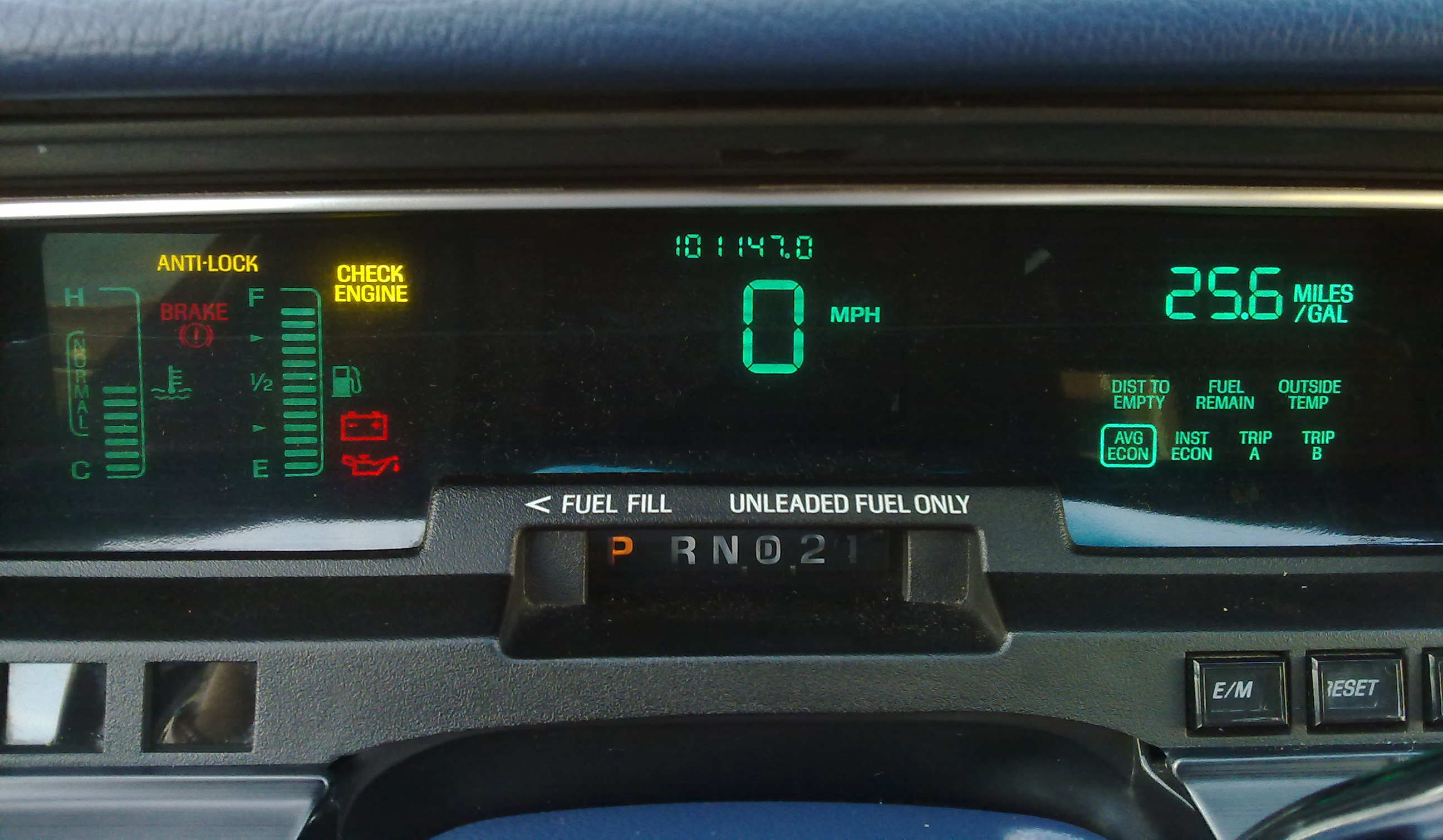
OLEDs have high contrast, and I suppose you could probably replicate the look, but I doubt that the style will come back.
https://en.wikipedia.org/wiki/Vacuum_fluorescent_display
EDIT: A few more car dashboards using similar style:
https://s3.amazonaws.com/skillshare/uploads/session/tmp/50c99738
https://www.pinterest.com/hudsandguis/retro-car-dashboards/
And some concept cars with similar dash:
https://www.hudsandguis.com/home/2022/retro-digital-dashboards
Some other devices using VFDs:
My kid’s car is like this. I’ve been calling it retro-futuristic, which I think is a pretty apt description.
Oh what kind of car? I’d love for this style to come back for a bit.
Suzuki Aerio SX. I can’t find a picture that shows the whole dash, but here’s part of it:
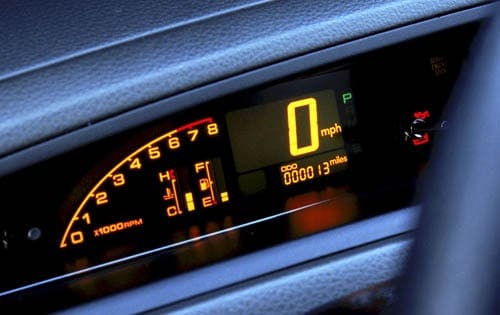
Many receivers and amplifiers still have VFDs to this day. I still wonder why, LCD has to be significantly cheaper.
They look cool as hell though, so I appreciate that they go the extra step.
As someone who also likes VFDs, I’ve fully expected that they’d be extinct in new products by now thanks to cheap LCDs and OLED. But I find it awesome that they’re still hanging in there.
Newer, but I quite like the gentle amber LCD (not LED) displays of my car. At night it’s bright enough and sharp enough without being visually loud. I wish more of these displays were still being made, I’d love to use them in car-centric Arduino projects and data displays that would be consulted at night or that sort of thing.
I always ask my friends “How the fuck do you live like this?” when I hop into a car and the music UI is a garish color searing itself into my retinas permanently.
Thankfully, advertising companies have identified this marginal comfort I find in the warm interior lighting of my car and have proceeded to mount insultingly blinding screens all over the city.
The city being the midrise urban sprawl north of Beirut. What do you mean regulations on brightness habibi? You think you live in Paris? Imagine this: half the street is unlit because the power is out, but the advertising company’s invasive bullshit budget™ has enough foreign cash to burn to keep generators running all night for these shitty ads. Gotta beam an extra few kilowatts of photons straight into this sleepy driver’s eyeballs while they operate a motor vehicle, on a highway that a lot of people cross by foot. There’s a special on fish at the fancy supermarket, how will I live without that knowledge?
Thankfully, the “state” of Israel has identified that the civilian structures of Lebanon mildly inconvenienced me, and has proceeded toNewer, but I quite like the gentle amber LCD (not LED) displays of my car. At night it’s bright enough and sharp enough without being visually loud. I wish more of these displays were still being made, I’d love to use them in car-centric Arduino projects and data displays that would be consulted at night or that sort of thing.
Not sure if you mean VFDs or amber LCDs, but Matrix Orbital sells both sorts in small quantities that you’d use in a project and can interface to a microcontroller – I was interested in them myself when looking for small VFDs, years back. They’re going to be segmented alphanumeric or grid displays, though, not things with physical custom display elements like those car dash things, but that’s kinda part and parcel of small-run stuff.
https://www.matrixorbital.com/
https://www.matrixorbital.com/blc2021
Just choose the “amber” option if it’s an amber LCD you want.
Can also get their displays via Mouser or Digikey.
That’s exactly the kind of display I’m talking about. Nice to see they’re still around.
The ones I have are all just grids, higher resolution than these but still comfortingly blocky. I’ve actually replaced the dash display recently since the original one got deep fried under the sun and lost all contrast when the weather was above 20°C.
Ah, good to hear it. They do (or did, and I assume still do) also have higher res displays.
Going back to an earlier bit in the conversation, where you were concerned about light sources in the car, I think that auto-dimming might also help (not just with VFDs, but the brightness of any in-car display). My car dash has the option to automatically set brightness based on ambient light levels (something that I wish my desktop computer monitor could do…part of “dark mode”'s benefit is a mitigation for devices that don’t do this). I don’t know if that was a thing back in the 1980s or so, when these display designs were popular.
I also kind of wonder if eye-tracking, which has come a long way, could be made reliable-enough and responsive-enough to toggle off displays if the car can detect that a user is looking somewhere away from them. Maybe be conservative, not with some critical displays, but stuff like the radio or clock or something. Eye tracking systems normally use the near-infrared, as I understand it, not visible light, so I’d think that you could theoretically do it in a darkened car without problems.
All of the car’s interior lighting (all in amber) does dim automatically when I drive under a bridge or into a tunnel, and automatically dims when I turn on the headlights. So some rudimentary dimming was implemented in 2000 when it was made. No clue where the sensor is though.
Steam locomotives. The crazy streamlining, the size of some of those motherfuckers. 6 foot tall wheels, 100 tons moving at 125mph and all that shit accomplished 80+ years ago

The choochoos got really big at the end of the steam era. UP 4014 happens to be about as long as that bridge which crosses a 4 lane road
In the near to mid future, I think an answer to this question are Internal Combustion Engines. I love electric vehicles and look forward to the tech improving. But the sheer coolness factor of moving a large machine through perfectly timed and calibrated explosions is tough to beat.
I fucking hate cars, including electric ones… And I still agree. Combustion engines are cool as hell.
And the fact is “mechanic automated” system for me is what makes it even cooler. All you had to do to start is twist it a couple revolutions and bang, it works as long as you have fuel because everything simply works. Of course, today you have electronic fuel injection and so one, but if you want you can make it works just with a lot of metal to do the right parts.
Man, I’ll miss combustion engines (but I hope its use ends ASAP because planet can’t wait anymore)
Suck, squeeze, bang, blow
As a subset of this, the fact that carburators worked as well as they did, until we had the technology to invent the simpler fuel injector, I think is pretty cool.
Constant velocity carburetors blew my mind when I learned how they worked, and I got the funniest introduction to them.
I had an Aprilia RS-50 motorcycle which had a slide-type carburetor. Instead of a coin-in-a-pipe throttle, this thing basically had a portcullis across the intake. Pulling on the throttle cable pulled the slide upwards making the aperture/venturi larger, allowing in more air, while also lifting a needle up out of the jet to allow more fuel in. It’s a 2-stroke race bike, so you could easily bog down the engine if you opened the throttle too fast.
Then I bought a Ninja 250F, which has constant velocity carbs. Which also have a slide, AND a butterfly valve. The butterfly valve is operated by the throttle cable to control power. The slide is vacuum powered from the engine, and opens and closes the venturi to keep the air velocity through the carburetor constant, in order to keep the suction at the jet constant. It also has a needle in the main jet which it lifts along with the slide, so the needle’s taper meters the fuel mixture for the amount of air going through the carb. This inherently compensates for air density; if the air is less dense the vacuum mechanism can’t pull the slide open as far so the slide doesn’t open as far, and neither does the needle valve. So it automatically maintains the mixture.
Which is why using constant velocity carburetors on the Rotax 912 engine is such a brilliant idea. A carbureted airplane engine with no cockpit mixture control.
Drag disagrees. If you want transportation with fire, ride a dragon. No need to pollute the earth. The emissions make it uncool, just like the ridiculous Mad Max cars.
Whenever I hear a running hit and miss engine it brings a smile to my face, similar with small stationary steam engines. There’s a club in Baraboo WI that does a big meetup once a year where there’s just tons of early tractors and stationary engines powered by all sorts of different types of combustion with all sorts of creative new engine designs that stopped being viable around the time of the first world war. I haven’t been able to go most years but it’s really incredible to see so many wonky engines wirring and popping and hissing and clanking around, all while struggling to reach the performance of a present day lawnmower (and not a good one at that)
I never knew the complexity of ICE until watching the Garbage Time YouTube channel. They repair old cars (and sometimes break them to fix them later) and show the whole process, but do it as a hobby, so it’s all for entertainment.
Cell phones, when they had personality. The 2000s was such a good time for them, you had so many designs. Slide out keyboard, panels that can slide, sleek designs, some had actual buttons .etc
But we’re now relegated to just a varying series of rectangles and squares. Yay…
I got one that slid up to reveal the keyboard after watching The Matrix, and I thought it was the coolest phone ever. I still have it, and I still think it is pretty cool.
Edit: it’s not an actual keyboard though, it’s a phone keypad for dialing or sending texts with t9 input.
It was the Samsung A737.
It looks like this closed
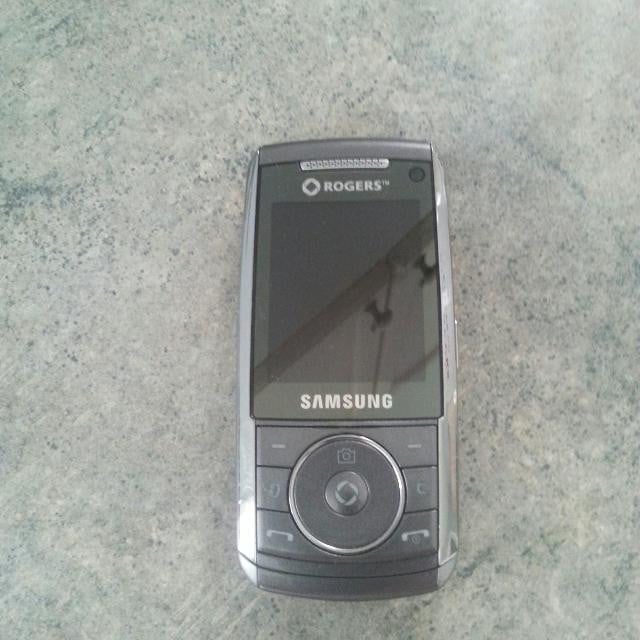
And here it is open
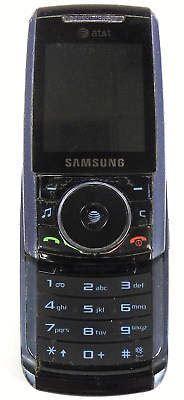
I fell in love with slide phones after watching Densha Otoko!
Pictures under glass: literally the only affordance anyone has now for device interaction
Mine folds in half, so that’s kinda cool
Oh man…I have an entire ten page paper on the go about this topic and it just keeps growing. One day I’ll publish it in a blog or something, but for now it’s just me vomiting up my thoughts about mass market manufacturing and the loss of zeitgeist.
The examples that I always use are a) Camera Lenses, b) Typewriters, and c) watches.
Mechanical things age individually, developing a sort of Kami, or personality of their own. Camera lenses wear out differently, develop lens bokehs that are unique. Their apertures breath differently as they age No two old mechanical camera lenses are quite the same. Similarly to typewriters; usage creates individual characteristics, so much so that law enforcement can pinpoint a particular typewriter used in a ransom note.
It’s something that we’ve lost in a mass produced world. And to me, that’s a loss of unimaginable proportions.
Consider a pocket watch from the civil war, passed down from generation to generation because it was special both in craftsmanship and in connotation. Who the hell is passing their Apple Watch down from generation to generation? No one…because it’s just plastic and metal junk in two years. Or buying a table from Ikea versus buying one made bespoke by your neighbour down the street who wood works in his garage. Which of those is worthy of being an heirloom?
If our things are in part what informs the future of our role in the zeitgeist, what do we have except for mounds of plastic scrap.
Old camera lenses are awesome. I’ve got some steel and glass rokkors that are beautiful. They render in such a wonderful way too, so painterly. They have thorium in the glass! Not enough to be sketchy to use but something that obviously isn’t done anymore. Bonus points that they can be fixed with a hammer.
Old camera stuff in general is subjectively cooler. The leaf shutters in my 4x5 lenses are incredible little machines. Film in general is cooler than whatever sensor the latest and greatest has. Actual bits of silver suspended in emulsion, with colour filters and dye couplers that react in development. There’s a great three part video on YouTube breaking down Kodak’s manufacturing process. It’s mind boggling that stuff even works. Ohhhh and actually darkroom optical prints! Don’t get me started there!
I’m going to develop some rolls I think. Got me in the mood.
I have a couple of 80s Rokkors that I use with a speedbooster on my lumix g9, a 50mm and a 35mm. Despite having to do some math in terms of converting things like focal length, etc… because of the adaptor, It’s WELL worth it.
Rokkors here as well! I still shoot them mostly with film, but I’m tempted to get an adapter for my Fuji. Don’t love the conversions though, stuck in my ways with focal lengths and it’s just weird when a 28 becomes a 42!
Just wanted to say thank you for writing this. Very cool take, that was so well written to get us on board for how and why “that old junk” has personality that is being lost.
Also
Damn.
Awww shucks. Thanks. I appreciate the compliment.
Damn.
Not much to say other than – “Damn.”
You’re right, though.
I MISS CLEAR COMPUTERS >:(

I mean LOOK AT IT it’s so much cooler than just a box!
The SteamDeck community has been cooking with some clear cases which I would buy if I didn’t have to risk breaking my beloved $500 indie machine.
I miss plastic electronics. Oddly enough glass and metal feel more fragile.
HTC knew what was up with the HTC One series. Their polycarbonate bodies felt Nintendo 64 controller levels of durable.
I’ve got a drawer that has a stack of my old phones and devices in it. Among them is the CD MP3 player I’ve had since high school. It’s 24 years old, made entirely of plastic, it followed me all the way through high school and part of the way through college, and it’s in perfect working condition and bears only light scuffs. It might be my midlife crisis coming on but I’m tempted to start using the thing again instead of my smart phone. My PC tower has a 5 1/4" bay, I’m tempted to install an optical drive in it.
I still move a 5.25" Blu Ray writer drive between machines. Just in case I want to rip or watch an old bluray.
Without it, we have to sit.and wait for the dusty Xbox One to update just so it let’s us play a bluray.
The Xbox One is so fantastically bad, the only reason it’s not in the garbage is because it’s not mine and the SO wants to save it
YEYEYEYEYEYEYE
One of my dream projects would be to get a dead iMac G3 and make a modern-day sleeper build inside it. It was honestly the COOLEST a computer has EVER looked.
I’ve still got original Mac from 1984 and have been mighty tempted to see what I could do with a raspberry pi
YOOOOO that purple one! I wonder how hard it would be to do this to mine… time to add this to the Christmas list lol
best of luck! the one in the photo is from the company JSAUX but I don’t know much about it, just thought it looked pretty
I bought the translucent nitro purple back plate. Very easy to install.
The Switch Pro Controller is a little bit transparent which is cool.
Bicycle shifters.
The first iteration that could be operated without stopping was the Campagnolo Cambio Corsa.
To shift, you had to reach behind you, where there were 2 levers.The first one loosened the rear axle so it could move freely back and forth in the dropouts.
The second one had an eyelet you could use to move the chain sideways.
You put the chain on a different cog, and the rear wheel jumped forward or back due to the changed chain length.
Then you tightened the rear axle again.It’s terrifyingly beautiful:

To make sure I understand, you reached back and grabbed those levers while pedaling and riding the bike?
How many people lost fingers by sticking them into the spokes, I wonder?
Yes.
This sounds like a gadget specifically designed to make people fall off their bikes and break their bones.
… Cool.
Honestly those are terrifying. I can’t imagine doing any of that whilst on the move.
Hi there
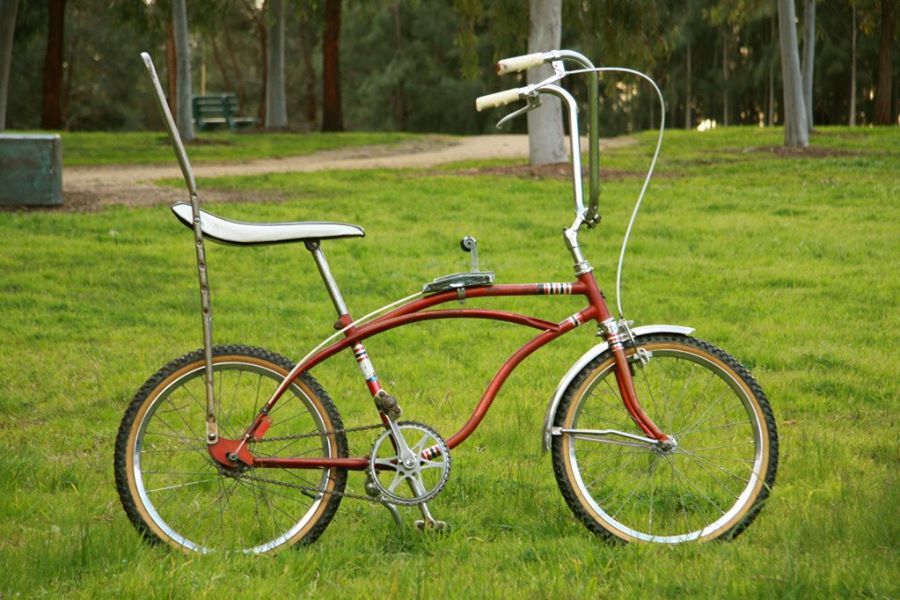
The fuck!
Any mechanical regulation process that used to be handled by actual machine parts. Think of the centrifugal governor, this beautiful and elegant mechanical device just for regulating the speed of a steam engine. Sure, a computer chip could do it a lot better today, and we’re not even building steam engines quite like those anymore. But still, mechanically controlled things are just genuinely a lot cooler.
Or hell, even for computing, take a look at the elaborate mechanical computers that were used to calculate firing solutions on old battleships. Again, silicon computers perform objectively better in nearly every way, but there’s something objectively cool about solving an set of equations on an elaborate arrangement of clockwork.
Someone showed me a record turntable with what must have been a centrifugal governor! What an ingenious device. (I got the impression from him this was unusual for a turntable, at least…)
I was under the impression that all wind-up turntables (I.e.: from the shellac records and steel needles and mechanical reproducers era) were using mechanical governors
Maybe I’m wrong though.
Oh I know little to nothing about turntables, so you’re probably right :-)
To add, there is something about those old 40s and 50s era technical films like you linked that is just so… I don’t what exactly it is, but I find them fascinating and genuinely informative, even though they are explaining tech that is decades obsolete.
It’s pretty awesome that they are still available 70+ years later in excellent quality!
Ships’ sails. I mean, I know some small vessels still use them, but look at any paintings from 1500s-1800s and tell me those huge white pieces of cloth don’t look cool.
Once widely used, the number of operational lighthouses has declined due to the expense of maintenance and the advent of much cheaper, more sophisticated, and more effective electronic navigational systems.
They were quite important for a long time. We used them for thousands of years, and they’re often unique in form, iconic. And they’re a good subject for photos and paintings, and I think that the light effect from them is neat. Lots of books and such using them, like ones on remote rocks, to get an isolated setting (“the lone lighthouse keeper”).
But the past few decades of technological advancement have probably closed the end of their era.
Similarly, at airports they had these alternating white and blue lights that would sweep the sky for miles around. When we were on the road at night I used to know where we were based on that. I loved it.
Flight instructor here. That is called a beacon, and airports still have them. And none of them have ever been blue. It may appear blue from the ground but the beam is actually green. The colors actually encode what kind of airport they’re at.
At a normal civilian airport that has runways, the beacon will be green and white.
At a military airfield, the beam will flash green and then two whites.
At a heliport with only helipads for helicopters, the beacon will be green, yellow, white.
At a seaplane base, the beacon will be white and yellow.
The beacon will operate from sunset to sunrise, and also during daylight when instrument conditions prevail.
Bonus airport light fact: some smaller, less busy airports like your typical county airport probably does not turn all of its surface lights on all of the time. It’ll run the beacon to help pilots find the airport, but the runway and taxiway lights will remain off. Pilots are able to turn them on from the air by tuning their radios to the airport’s UNICOM frequency and pushing the PTT key several times in rapid succession. Quite often the brightness is controllable whether you press the key 5, 7 or 9 times. This is called Pilot Controlled Lighting. It’s an energy saving system that’s been around for decades now, and a fun magic trick for private pilots to pull on their friends lucky enough to be invited on a night flight.
I’ve witnessed the lights getting turned on for a landing when driving past my local airport before. That’s neat to know it might be pilot controlled!
It’s possible to look that up in a document called the Airport Facility Directory (which they now call Chart Supplements apparently) but if you don’t speak pilotese you’re not going to make heads or tails of it. Here’s the line that instructs pilots that there’s pilot controlled lighting at the first airport I ever landed at:
Actvt MALSR Rwy 05; REIL Rwy 23; PAPI Rwy 05 and 23; HIRL Rwy 05–23—CTAF
That expands to “Activate Medium Intensity Approach Light System for runway 5, Runway End Identifier Lights for runway 23, Precision Approach Path Indicator for runway 5 and 23, High Intensity Runway Lights on runway 5 and 23 on the Common Traffic Advisory Frequency.” It’s actually weird to me the PAPI is pilot controlled; usually those are constantly on because they’re useful even during the day.
Drag doesn’t like light pollution. Imagine living in the light path of a lighthouse. Every minute your bedroom lights up like Christmas then goes dark again.
I think if you lived near a lighthouse you would invest in some blackout curtains.
A lot of older tech had a way more interesting silhouette. You can see this clearly in how many objects live on in icon form. We still often use handset phones, magnifying glasses, gears, or the infamous floppy disk save icon. I think the staying power of these really comes from how ephemeral and formless digital tech can be.
Reminds me of the device icons in Microsoft Intune.
Android is represented by a rounded rectangle. Linux is a rounded rectangle, but yellow. iOS is, you guessed it, a rounded rectangle, but black.
Windows, however, is a nice flat-screen monitor (read: a rounded rectangle on a stick)
Oh wow, that sounds like a great example
The original tv remote didn’t use batteries. It used sound. Giant clunky devices with large tactile buttons. Never runs out of batteries and still works if your kid tries to block the screen to keep you from turning it off
Those remotes used little spring-loaded mechanical chimes that emitted ultrasonic notes. As a kid I discovered my parents’ big Magnavox console stereo would change channels if I clinked a handful of coins.
How did it generate that sound without batteries? Was it literally the audio from the clicking of the buttons? Genuine questions.
edit: Thanks for the several answers. They all seem prone to interference, but it is nice that they worked without power.
The button pressed a spring-loaded thing that struck a piece of metal, almost like a wind chime, emitting an ultrasonic note. I discovered by accident that I could make my parents’ stereo change channels by clinking coins together.
lmao I vaguely remember these, wow that’s nostalgia
deleted by creator
Yes although I would argue cars and highways are just evolutions of horse carts on dirt roads, a way older technology than trains.
Trains aren’t old tech though. Just tech that got pushed out by auto-maker lobbying. In places (like Japan, or China, or parts of Europe) where they kept evolving they only got better.
Especially the interurban lines that built every American megacity. Small single driver electric trains (basically trolleys but designed to go faster than streetcars and ran on dedicated right of way outside of the city) they were a really efficient method of transporting people into cities, many allowed for flag stops (where a passenger would flag down the car anywhere along the tracks to stop so they could get on) and would run between cities, feeding from smaller towns into larger ones or just running between nearby cities.
Unfortunately passenger railroad service has always been unprofitable. Until the 1960s most passenger services were largely paid for by lucrative mail contracts and would haul Railroad Post Offices, which were delicated cars with tiny postal sorting facilities in them that post workers would sort the incoming and outgoing mail on and pickup and drop off big bundles of mail at every stop and often even without stopping. Most interurban and trolley lines were largely real estate schemes where they’d buy comparatively cheap farm land, build a rail stop and possibly a few homes and businesses near the stop to sell for a tidy profit, then sell the rest of the land plot by plot now that the rail connection and other nearby homes and businesses made it far more valuable. This was even the tactic when building the transcontinental railroad, where the railroad companies built entire cities along the way.
So simply put, railroad construction and operation is prohibitively expensive. On the other hand, if the US Federal Government matched their spending on highways for railroad expansion the cost of rail transport would probably blow the cost of driving or hiring a truck out of the water entirely
Neither sure how to call it, nor is it a technology, more like a mindset. I am just gonna name it: “Prideful Craftsmanship”
Basically the incorporation of “useless” decorations and embellishments, to show off ones skill and maybe market oneself a little. Definitely superseded in the capitalist world. Things were just prettier or more interesting to look at, even stuff that wasn’t meant to be flashy.
But with nearly everything being made to a price point, this practice has been somewhat lost.
You’ve set off something in the woodworker’s side of my brain.
There’s a style of furniture called Arts & Crafts. The Arts & Crafts movement was bigger than furniture, but in the furniture world there was kind of a clap back at both ostentatious Victorian furniture a la Chippendale, and the mass produced crap the industurial revolution brought forth. So a style of well built, hand made furniture arose. The joinery was often exposed and in fact celebrated as features of the piece; through tenons would stand out proud, pinned joints would be done in contrasting wood exposed on the face side of the piece. I’ve heard it described as “in your face joinery.” The intention is to say “Look at this table. This table was not manufactured in a factory, it was built in a workshop. Look. At. It.” In the United States this movement often went for an aesthetic reminiscent of the furniture and fittings of old Spanish missions, so over here we often call it Mission furniture.
Compare this to the shaker style of furniture. The shakers were a sect of Christianity who were so celibate that men and women were required to use separate staircases, which is why this paragraph is largely written in the past tense. They led very modest lives in communal villages, and were known for their simple and yet extremely well made wooden furniture. A shaker table is the universal prototype table. It has legs, a top, and whatever apron or other structure is required to hold it together. Decoration was often limited to choosing pleasing proportions and maybe tapering the legs. I think a shaker craftsman would see the exposed joinery of the Mission style as sinfully prideful.
Older forms of computer RAM.
Before integrated circuits, we had core memory which was a grid of wires and at each intersection was a little magnetic donut that held a single 1 or 0.
https://en.wikipedia.org/wiki/Magnetic-core_memory
Before that they had delay line memory, where they used vibrations traveling down a long tube of mercury, and more bits meant a longer tube to store a longer wave train.
They use to have weaving grannies for the magnetic core memory production.




















